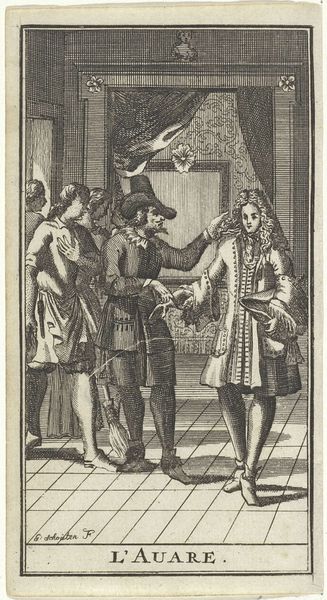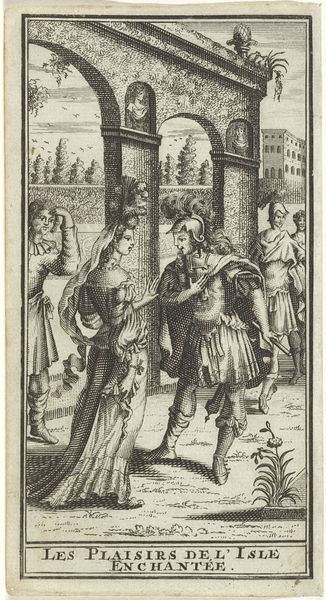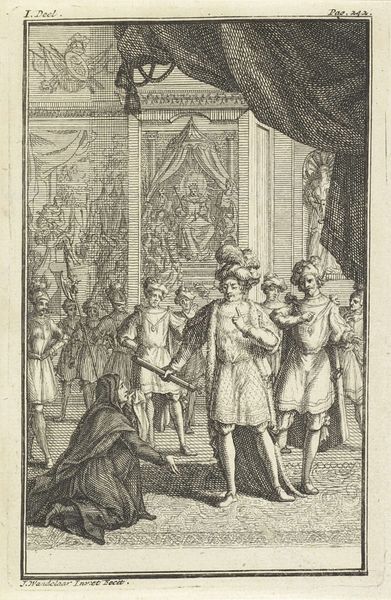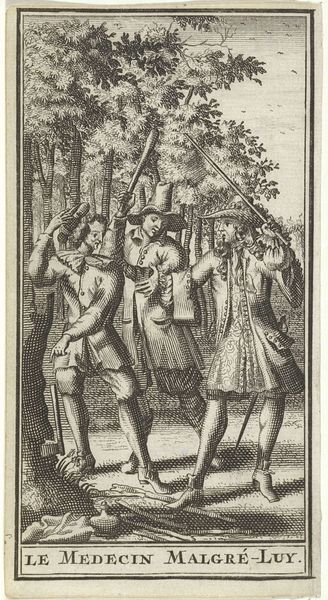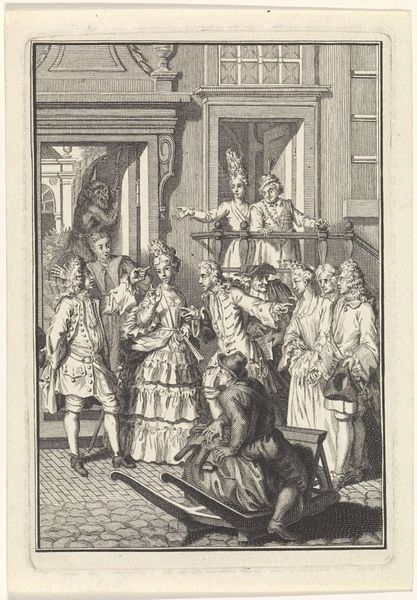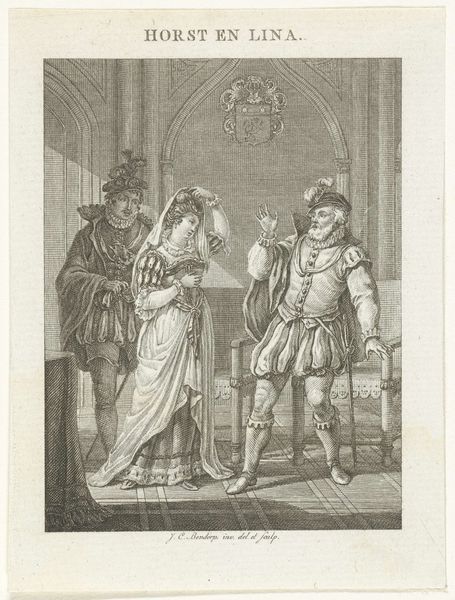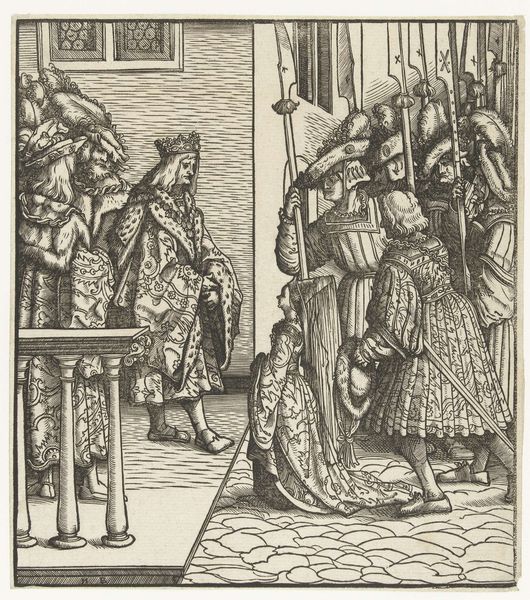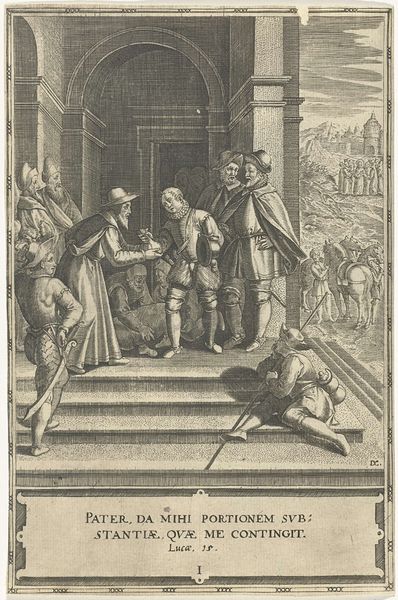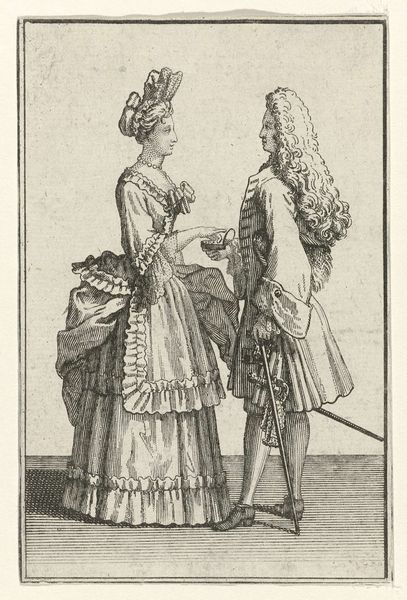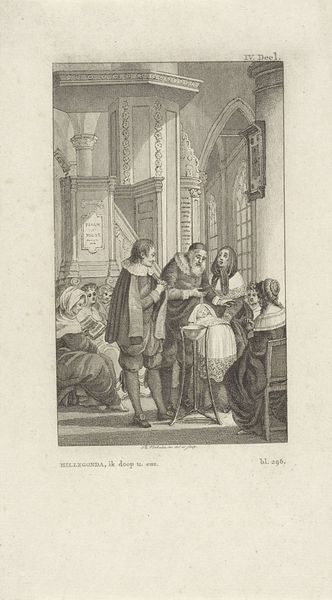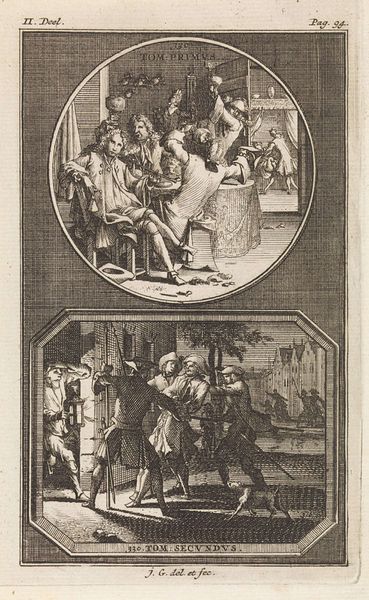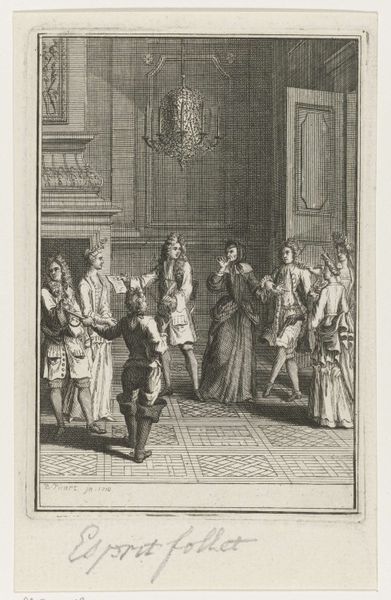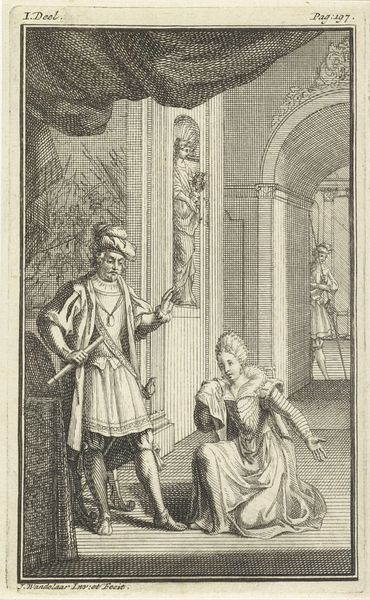
print, engraving
# print
#
caricature
#
old engraving style
#
caricature
#
genre-painting
#
history-painting
#
engraving
Dimensions: height 130 mm, width 70 mm
Copyright: Rijks Museum: Open Domain
Curator: This is a piece entitled "Tegen wil en dank getrouwd," or "Married Against Their Will," dating back to 1713, attributed to Gilbert Schoute. It's an engraving on paper. The scene seems rife with social commentary. Editor: My first impression is the sheer theatricality. The figures are arranged almost like actors on a stage, the exaggerated expressions lending a certain drama to what could otherwise be a mundane event. Curator: Precisely. Schoute uses caricature to highlight the societal pressures surrounding marriage at the time. It’s a commentary on arranged marriages, where individual desires were often secondary to family alliances and economic stability. Note how the bride appears almost detached, her gaze averted, which underscores a sense of resignation. Editor: And consider the stark contrast of the sharp lines in the figures against the horizontal linearity of the wooden floorboards. It enhances that sense of a rigid environment. But beyond its linear construction, I wonder what we can deduce about the implied lighting. Is there a single dominant source, or many sources? Curator: The symbolism here is pretty clear. The contract being signed represents the binding nature of the agreement, while the positioning of the older man on the right—presumably the bride's father—with his hand firmly clasping the groom's suggests a calculated transaction. We have to view this through the lens of 18th-century Dutch society where marriage was so closely linked to economic and political survival. Editor: Look, too, at how Schoute contrasts patterns of light and dark on the figures to create visual weight in an otherwise planar image. The details and fine textures of their attire offset the caricature-esque facial distortions; these structural patterns highlight the psychological discord at play within the subjects. Curator: Definitely. It also gives you some insight into the power dynamics within the family and the broader community. A piece like this gives modern audiences the chance to reflect on how far social attitudes towards marriage have evolved, and where they have stayed exactly the same. Editor: Ultimately, Schoute presents us with an emotionally-charged tableau; a visual dissection of forced compliance and social rigidity through skillful manipulation of line and visual planes. Curator: It’s a sharp critique of societal norms masked as a simple genre scene, using satire as a tool to expose the darker realities beneath the surface.
Comments
No comments
Be the first to comment and join the conversation on the ultimate creative platform.
